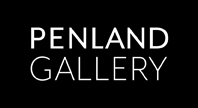COLETTE FU
Studio artist; teaching: Haystack (ME), Arrowmont (TN), Ox-Bow (MI); solo exhibitions: National Museum of Women in the Arts (DC), Taubman Museum (VA), Phillips Museum (PA), Philadelphia Photo Arts Center (PA), Asian Arts Initiative (PA), Athenaeum (PA); collections: Metropolitan Museum (NYC), Library of Congress (DC)
Bökh, from the series We Are Tiger Dragon People
Pop-up book, Epson Ultrachrome HD pigment ink, Epson Enhanced Matte paper, cardstock, acid-free adhesives, leather, steel studs, Davey board
24H x 35W x 30D inches, open
2019
Wrestling in Mongolian translates as Bökh, which means durability. Those who wear colorful Jangaa around their neck have won before. These silk ribbons, colored red, green, yellow, white, and blue, represent fire, water, earth, and air, with blue representing Mongolia, the Land of eternal blue sky. Jangaa signifies the wrestler as sacred, as these scarves are also worn by animals sacrificed to their Gods. They dance as they get on the field, mimicking the prance of lions, tigers, and deer. Only the winner will prance off the field.
There is a legend about a young Mongolian woman who claimed that she would marry any man who wagered 100 horses and could beat her in wrestling. She ended up acquiring an army of over 10,000 horses. As a tribute to the woman wrestler who was never defeated, men now wrestle wearing an open vest to prove to their opponents they don’t have breasts.
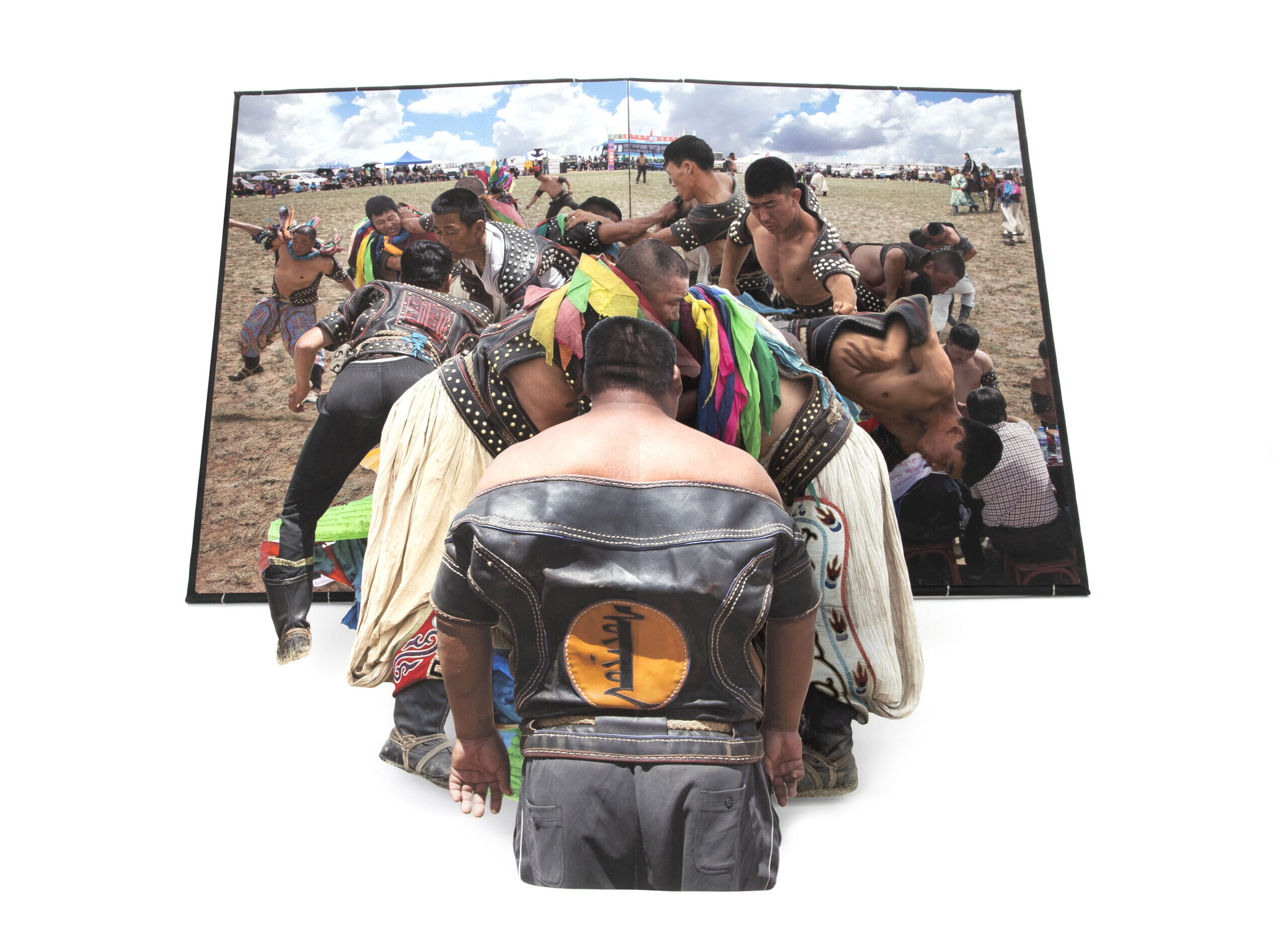
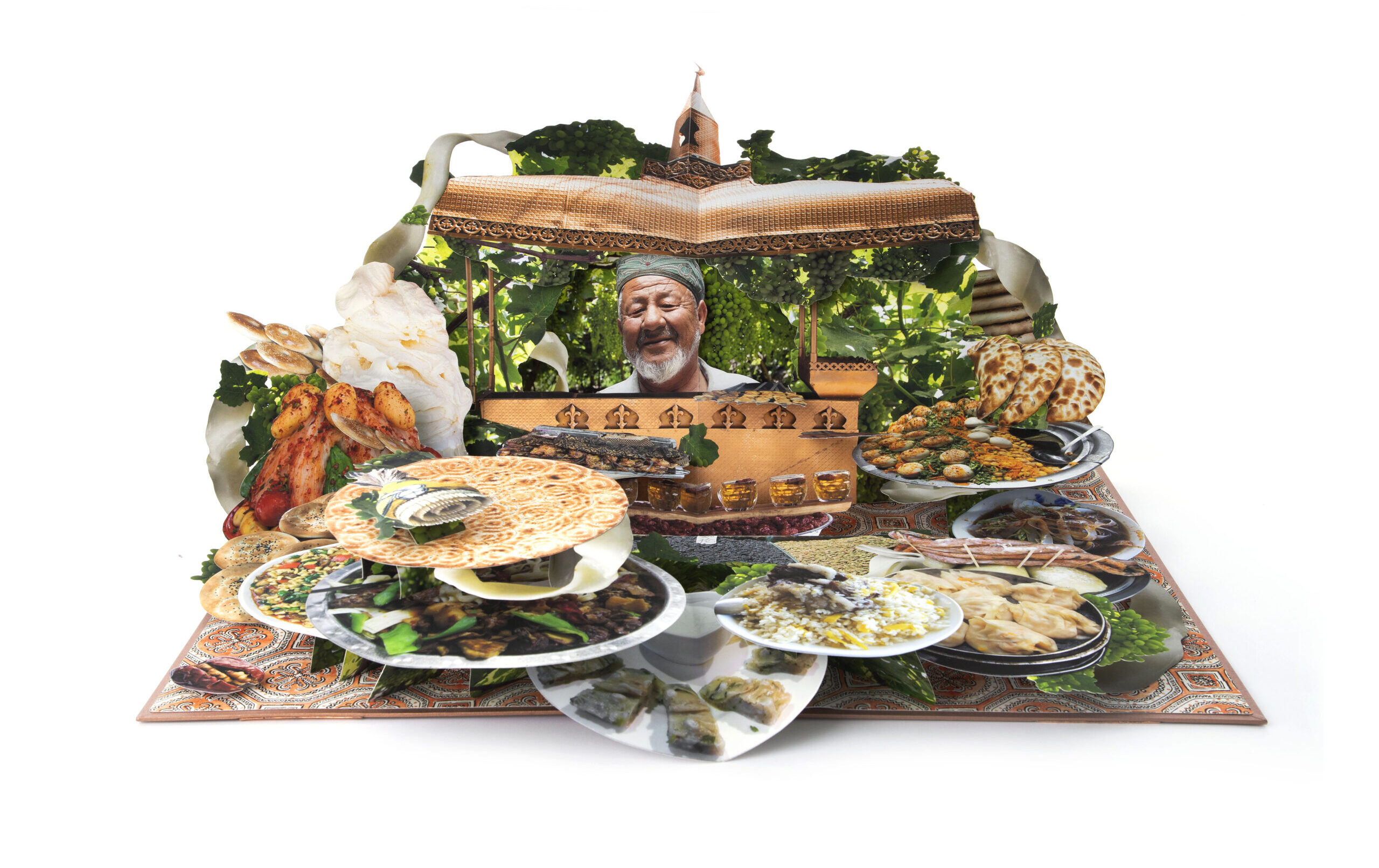
Uyghur Food, from the series We are Tiger Dragon People
Pop-up book, Epson Ultrachrome HD pigment ink, Mohawk Superfine Eggshell, acid-free adhesives, Chinese brocade, Dong handwoven indigo fabric, Davey board
16.75H x 35W x 32D inches, open
2020
Uyghur Food features typical and popular cuisine of the Uyghur nationality. In the front left you see naan bread with traditional designs that are hand punched with a chicken feather durtlik (stamp). The copper background is a classic kabob grill cart. The dishes are all placed on a traditional tablecloth and are surrounded by grapes from the Turpan Grape Valley. These grapes account for 80% of China’s grapes and raisins. Hand-pulled Laghman noodles surround the spread.
Uyghurs are a Muslim Turkic ethnic group living within China’s dominant Han and have been under Chinese control since the 18th century. The majority reside in Xinjiang Province, which translates as “New Frontier” in Mandarin Chinese. Rich in natural resources, the economic development of the region has been accompanied by the large-scale immigration of Han Chinese. In 1949, Uyghurs comprised over 80% of the population. The Uyghur population today makes up under half the population, and hundreds of thousands are detained in re-education camps. Xinjiang Uyghur Autonomous Region is now one of the most heavily policed areas in the world.
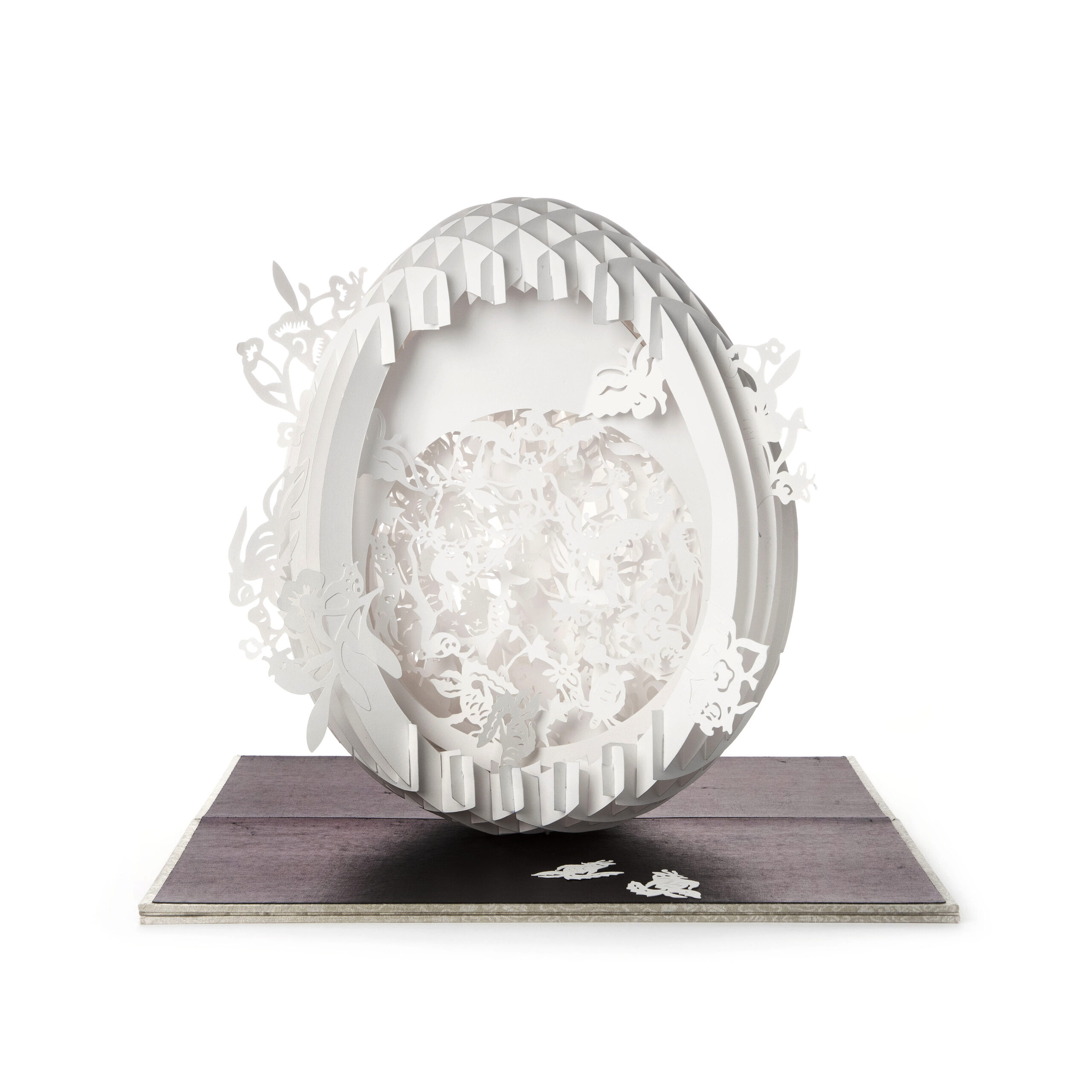
Mai Bang, from the series We Are Tiger Dragon People
Pop-up book, Epson Ultrachrome HD pigment ink, Mohawk Superfine Eggshell,
acid-free adhesives, Chinese brocade, Dong handwoven indigo fabric,
Davey board
16.5H x 18W x 18D inches, open
2021
Mai Bang is Butterfly Mother in Miao language. Butterfly Mother gave birth to 12 eggs which are the origin of all living things. Everything has life. The inside paper cuttings are inspired by traditional designs used for Miao papercutting, batik, and embroidery.
The base of the eggs is made from handwoven indigo cloth worn by the Miao and made by their Dong neighbors. The cloth is dyed with wild rose petals, persimmon peels, and chestnut shells, and then coated and pounded with egg whites.
I was born and raised in New Jersey. I began documenting the lives of ethnic minority groups within China in 1994 shortly after I learned that my mother is Nuosu Yi from the Greater Liangshan Mountains of Sichuan Province.
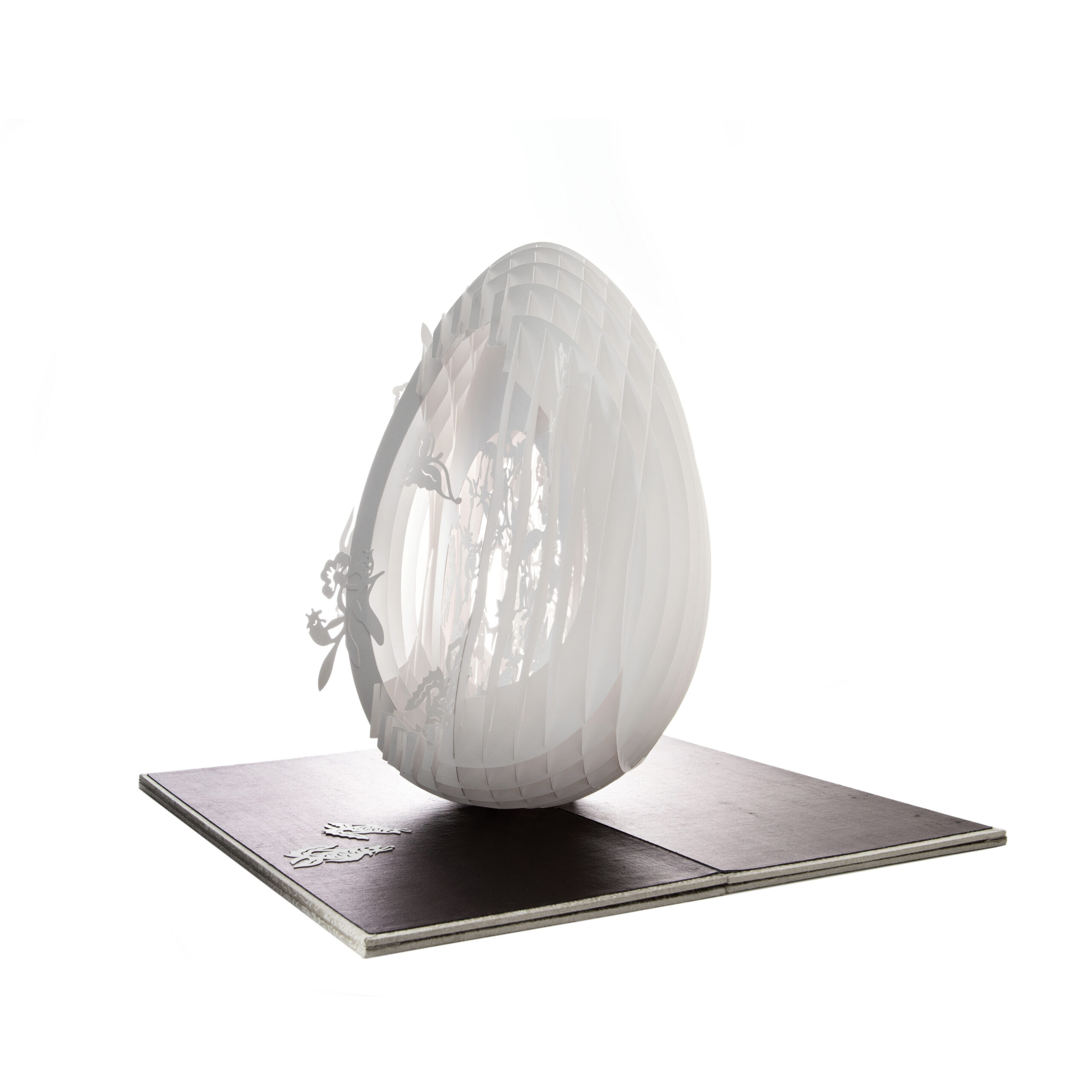
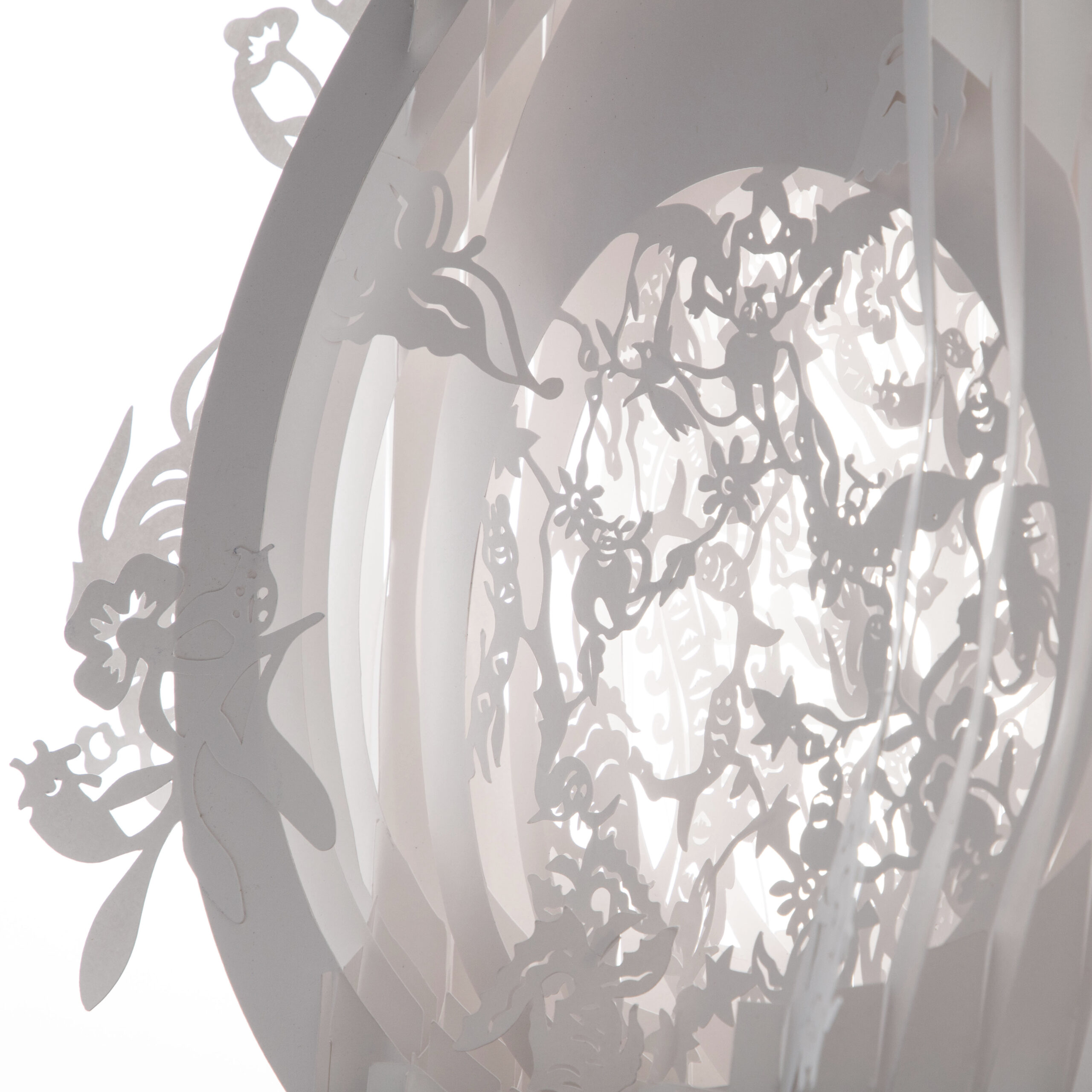
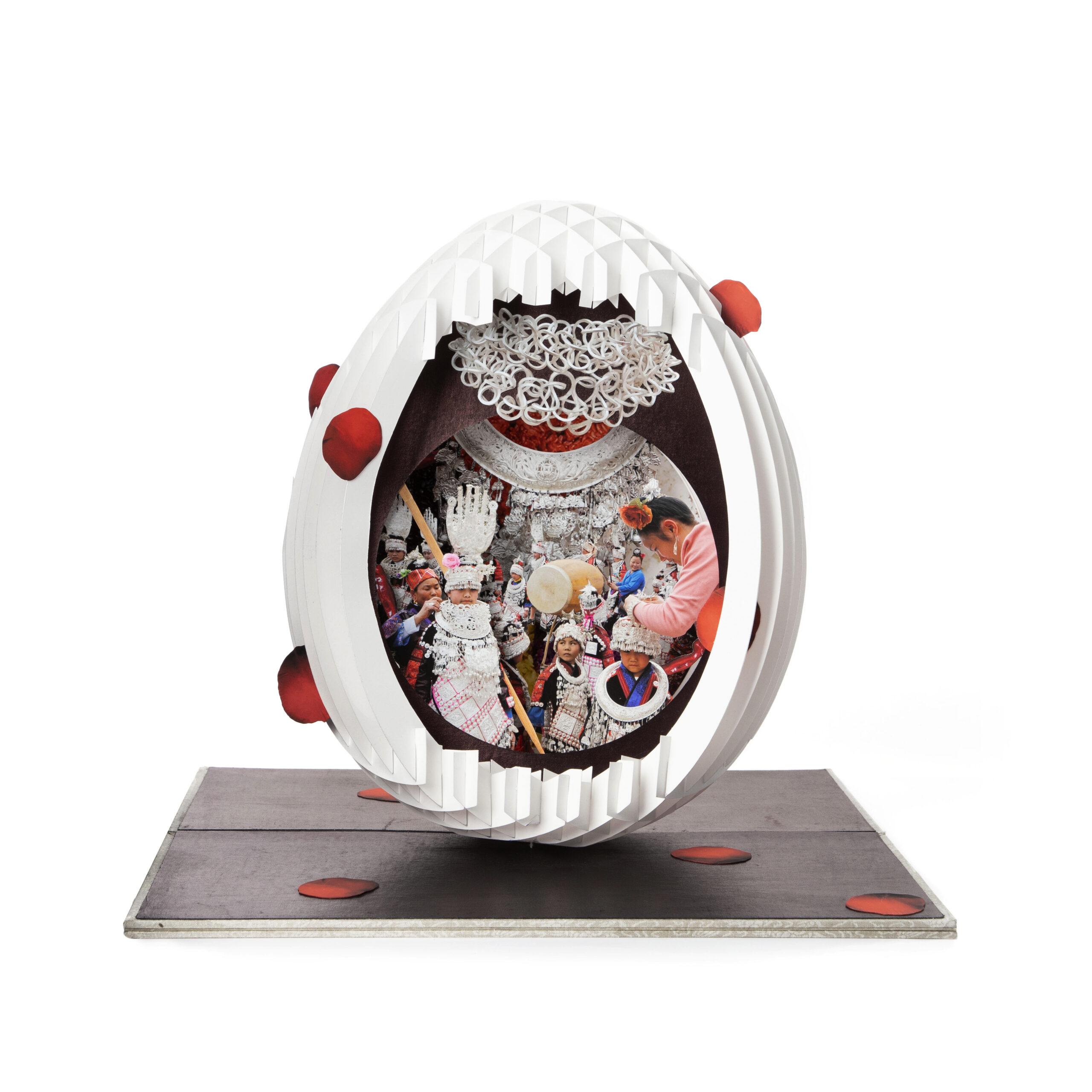
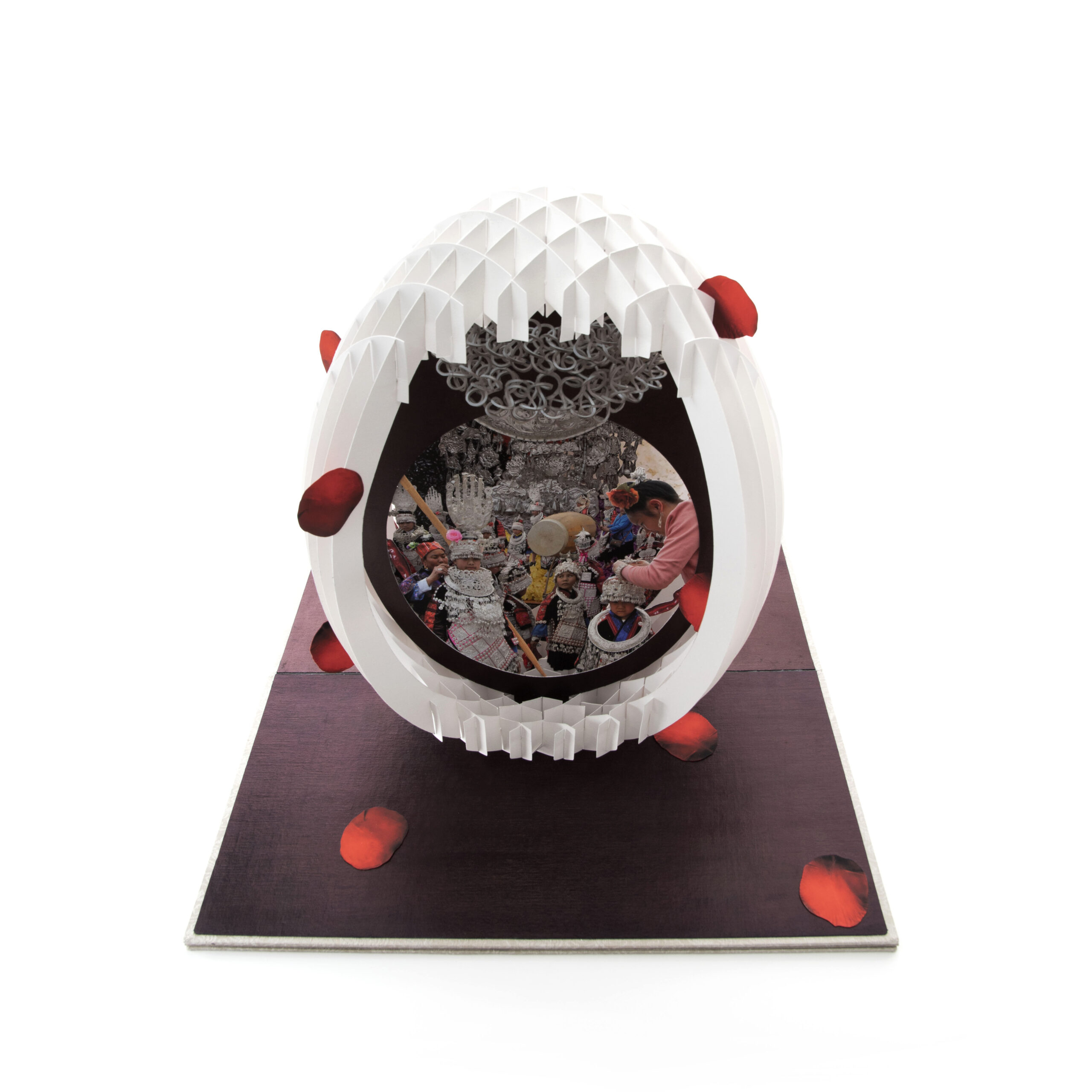
Wings of Silver, from the series We Are Tiger Dragon People
Pop-up book, Epson Ultrachrome HD pigment ink, Mohawk Superfine Eggshell, acid-free
adhesives, Chinese brocade, Dong handwoven indigo fabric, Davey board
16.5H x 18W x 18D inches, open
2021
Every year, during the Sister’s Rice Festival, unmarried Miao women dress head to toe in their finest silver weighing up to 40 lbs. Long ago the Miao carried their wealth in silver as they were forced down from the north. It is their dowry prepared from birth and a symbol of wealth and beauty. The Miao believe that silver represents light which drives out unwelcomed spirits.
Colorful glutinous rice dyed with leaves, berries, and flowers is wrapped in a silk handkerchief with treasures hidden inside and is exchanged between unmarried young women and men. A pair of chopsticks or red petals represent that the woman also likes the young man. One chopstick or red chili pepper is a sign of rejection.
Chuan Dong, 19 Generations of Papermaking in a Cave,
from the series We Are Tiger Dragon People
Pop-up book, Epson Ultrachrome HD pigment ink, Mohawk Superfine Eggshell, acid-free
adhesives, Chinese brocade, Dong handwoven indigo fabric, Davey board
16.5H x 18W x 18D inches, open
2021
Miao people have been making paper in a limestone cave since the middle of the Tang Dynasty (618-907 CE). A nearby spring provides unpolluted, neutral PH water, and neighboring mulberry trees flourish. Wang Xingwu learned papermaking from his father and is the 19th generation to continue the tradition. Nothing is wasted, as leftover materials are irrigated to the fields, fed to the pigs, or used for firewood.
I purchased the mulberry paper used within the egg from the village in 2014.

To inquire about the artists or work in the exhibition please email gallery@penland.org or call 828.765.6211


